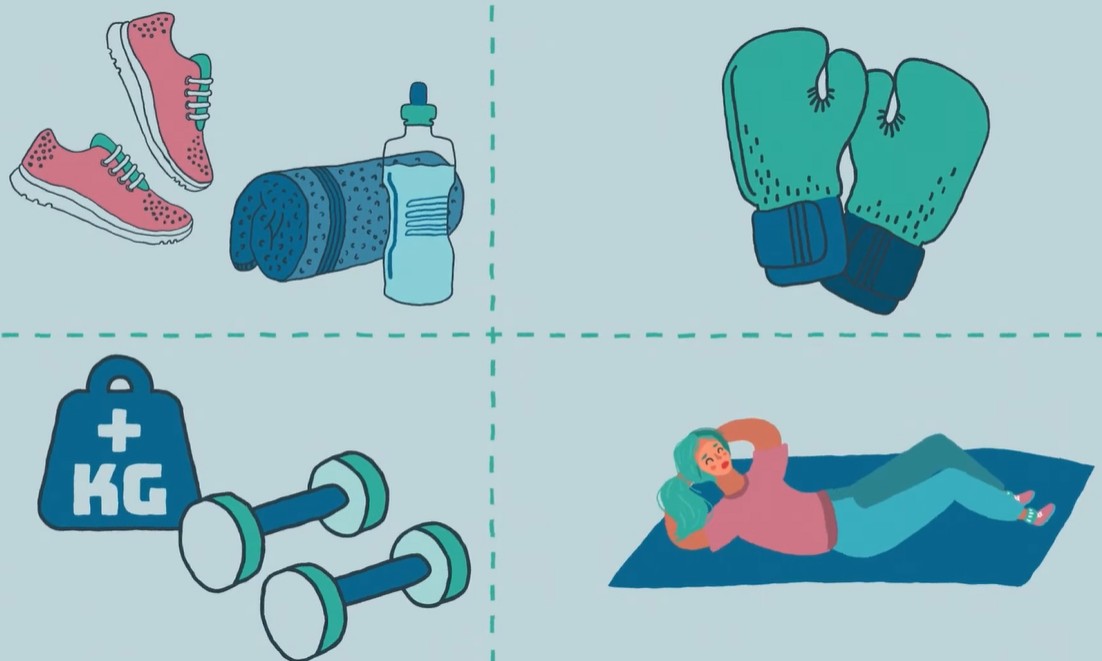In this section
Learn how to stay active and manage back and pelvic pain during pregnancy, improve posture and positioning after birth, and safely return to exercise in the postpartum period.

Learn how to stay active and manage back and pelvic pain during pregnancy, improve posture and positioning after birth, and safely return to exercise in the postpartum period.
We've written out what's been said in this video below if you'd like to read instead of listening to it. If you'd like it in another language, click here for instructions.
Pregnancy and birth can have a considerable impact on your body.
Everyone recovers at a different rate and you must gradually reintroduce and build your exercise levels. It can take up to 9 to 12 months for your body to fully recover. The following advice applies to women who have had any type of birth.
In the first 6 weeks
Continue your pelvic floor exercises. Gradually increase your walking distance, keeping within your comfort levels. And start gentle exercises, examples are outlined in the PDF accompanying this video.
6 to 12 weeks
Before progressing to do more advanced exercise, ensure any vaginal bleeding has stopped and your cesarean or perennial wound has healed.
Do low impact exercises and gradually build your endurance and strength. This could be something like pilates or yoga, swimming or cycling, cross training or power walking, or light weight training. As you build up your exercise it should remain comfortable for you.
After 12 weeks
If you've built up your cardiovascular endurance and muscle strength you can progress to more advanced exercises, such as a gradual return to running the pdf accompanying this video should help to guide you. A gradual increase to the weight you're using for strength training. A gradual introduction of high impact or high intensity training. A gradual increase in the difficulty of abdominal exercises, including sit-ups. Should you have any symptoms of pain, bulging of the stomach muscles, concerns with your bladder or bowel, or heaviness in your vagina when you exercise, immediately stop the exercise and speak to your GP for advice.
We've written out what's been said in this video below if you'd like to read instead of listening to it. If you'd like it in another language, click here for instructions.
Here are some simple tips to help you look after your body during pregnancy:
Getting out of bed - roll onto your side by keeping your knees together, squeezing your bottom muscles pulling in your stomach muscles and pushing through your feet to help you turn. let your legs come over the edge of the bed and push up to a sitting position with your arms.
Following birth it's important to look after your back. Try the following:
We've written out what's been said in this video below if you'd like to read instead of listening to it. If you'd like it in another language, click here for instructions.
Exercise is a great way to maintain your physical fitness and prepare yourself for birth. It's recommended that pregnant women do 150 minutes of moderate intensity activity every week and muscle strengthening exercises twice a week. These could include:
Aim to work hard enough to increase your breathing rate, but not so hard as to not be able to maintain a conversation. You can lie on your back to exercise, but after 19 weeks aim to lie on your back only for short periods and stop if you're feeling unwell. it's important to listen to your body, adapt your routine and think about reducing weight resistance or intensity as needed. If you're not already active, make sure you start gradually. Make sure you always warm up and cool down and stay well hydrated. During pregnancy you should avoid contacts and high risk sports, heavy lifting if your body is not used to this and hot environments.
Stop exercising If you experience any of the following:
Before starting any exercise please check with your Midwife or obstetric team if you have any of the following:
We've written out what's been said in this video below if you'd like to read instead of listening to it. If you'd like it in another language, click here for instructions.
Pain that limits day-to-day activities during pregnancy is not normal but it is common. This pain may be around the pelvis or the lower back.
Bending down, lifting things, doing activities on one leg or spending a long time in one position may make this worse. Here are a few things that may be useful in managing this pain:
Postural changes are normal during pregnancy as your bump grows and you gain weight. It's also normal to gain around 15 kg during pregnancy. Hormonal changes also allow your body to become more mobile. If you have ongoing pain that's not resolved during or after your pregnancy with this advice, please speak with your Midwife or GP and they may refer you to physiotherapy.